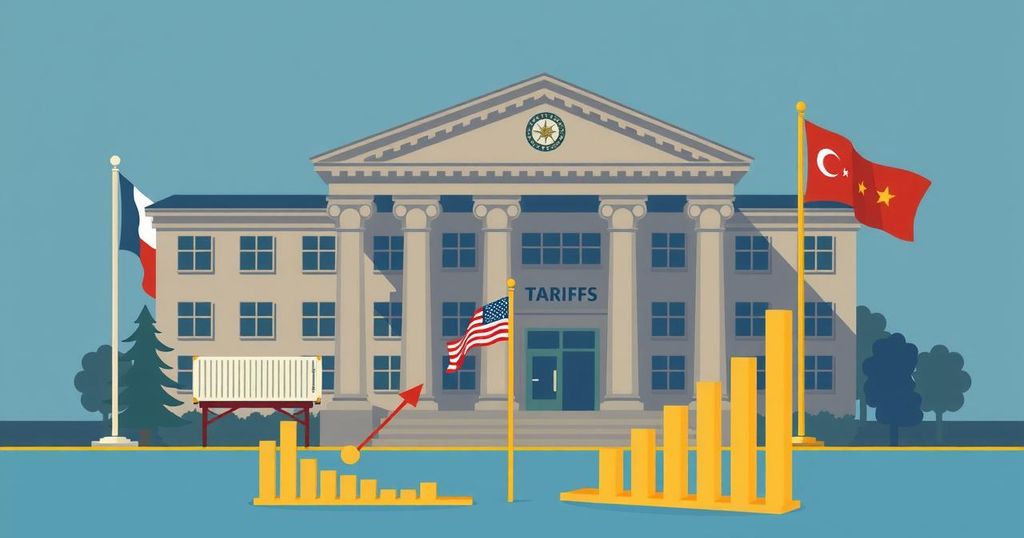US President Trump Announced Tariffs on India, Signifying Economic Shifts
President Trump announced a 26 percent “discounted reciprocal tariff” on India, half of the levies India imposes. He claimed the measure would revive American industry. The U.S. Commerce Ministry is analyzing the impact while India indicated readiness to negotiate. The tariffs may affect various sectors, with extensive global implications.
On April 2, 2025, President Donald Trump announced a significant trade measure, imposing a 26 percent “discounted reciprocal tariff” on India, which is effectively half of the 52 percent tariffs that India currently applies to American goods. During the announcement made from the Rose Garden at the White House, Trump characterized the day as “Liberation Day,” signifying the revival of American industry and asserting America’s financial strength. He stated, “This is a day we’ve been waiting for a long time… we began to make America wealthy again.”
In his remarks lasting about one hour, Trump articulated his views on foreign tariffs, emphasizing the unfair treatment of American workers by other nations. He lamented about jobs being “looted, pillaged, raped and plundered” by both friend and foe alike, asserting that American workers have suffered due to foreign levies. His Cabinet, along with factory and automotive workers, supported the announcement made during this event, which introduced reciprocal tariffs on countries with high trade barriers against U.S. goods.
Trump underscored the disparity in tariffs, where the U.S. only charges a 2.4 percent tariff on motorcycles, while other countries like Thailand and India impose tariffs as high as 60 percent and 70 percent, respectively. He displayed a chart showcasing tariffs imposed by various countries, affirming that such measures would now reverse, stating, “Reciprocal. That means they do it to us and we do it to them. Very simple.”
As a screen for the potential effects of these tariffs, India’s Commerce Ministry is already analyzing the implications of the new 26 percent tariff. The ministry indicated its intention to engage in discussions with the Trump administration to potentially mitigate the new duties. An official from the ministry referred to the development as a “mixed bag and not a setback for India,” given ongoing trade negotiations between the two nations aimed at finalizing their first phase agreement by fall 2025.
The announcement of a 26 percent tariff on India by President Trump marks a pivotal moment in U.S.-India trade relations, aiming to rectify discrepancies in tariff rates that have historically favored foreign industries. While reactions indicate a willingness from India to negotiate, the broader implications of such tariffs resonate globally, potentially impacting various sectors and trade agreements. As both countries move towards possible reconciliation through talks, the global economic landscape remains vigilant of the outcomes of this policy change.
Original Source: m.economictimes.com




Post Comment